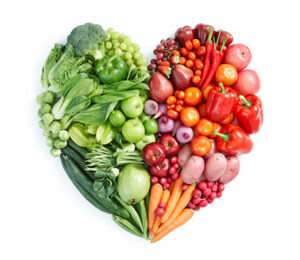Fresh, Healthy and Locally Grown
 Summer may be the easiest time of year to make healthy food choices. Surrounded by an abundance of fresh, locally grown food available at grocery stores and farmers' markets, getting your daily dose of fresh fruit and veggies is as convenient as it is delicious.
Summer may be the easiest time of year to make healthy food choices. Surrounded by an abundance of fresh, locally grown food available at grocery stores and farmers' markets, getting your daily dose of fresh fruit and veggies is as convenient as it is delicious.
To help children and teens develop a taste for fresh food, Aspirus St. Luke's clinical dietitian Jen Prachar, RD, LD, encourages parents to involve their kids in grocery shopping and cooking family meals. She also suggests keeping baby carrots, cherry tomatoes, grapes and other bite-sized options on hand for easy snacking. "Kids are more adventurous than we sometimes think," she says. "I've talked with parents who tell me their children now beg for slices of green pepper."
How much is enough?
According to the U.S. Department of Agriculture, the amount of fruit and vegetables we need each day depends on our age, gender, and activity level. The general rule of thumb is to fill half your plate with fruit and veggies. For children and teens, that equates to 1-2 cups of fruit and 2-3 cups of vegetables. For adults, the recommended amount is approximately 1½-2 cups of fruit and 2½-3 cups of vegetables.
Easy ways to up your intake
Prachar suggests several ways to incorporate fresh fruit and vegetables into family meals:
- Add sliced banana to peanut butter sandwiches
- Top breakfast cereal with sliced apples or berries
- Add cooked vegetables to scrambled eggs or omelets
- Pack miniature apples, pears or clementines for snacks and lunches
- Thread grapes and banana slices on skewers and freeze
- Top pizza with cooked onions, mushrooms and peppers and bake
- Add shredded carrots or zucchini to turkey burgers or meat loaf before cooking
To learn more about balanced eating, visit ChooseMyPlate.gov.
